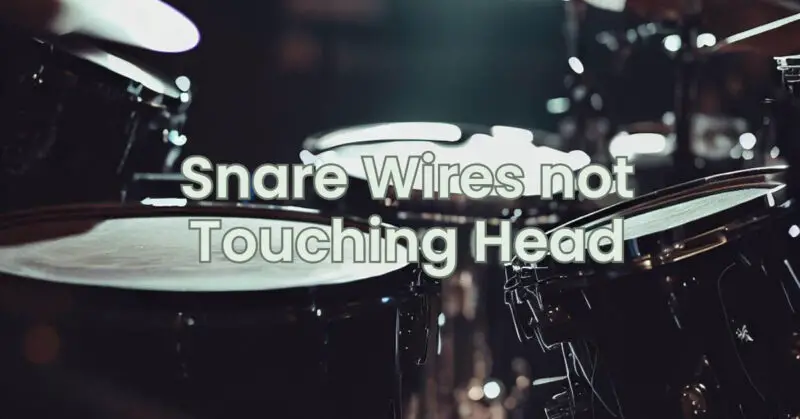The snare wires of a snare drum are an integral part of its sound, providing the characteristic buzz and sizzle. However, there may be instances where you notice that the snare wires are not making proper contact with the drumhead. This issue can significantly impact the drum’s response and overall sound. In this article, we’ll explore the possible causes behind snare wires not touching the head and provide solutions to address the problem.
- Improper Snare Strainer Adjustment: The snare strainer or throw-off mechanism controls the engagement of the snare wires against the drumhead. If the strainer is not properly adjusted, it can prevent the snare wires from making adequate contact with the head.
Solution:
- Check the snare strainer and ensure it is engaged correctly. Adjust the strainer tension or throw-off mechanism as needed to ensure proper engagement of the snare wires.
- Engage the strainer and examine the position of the snare wires. They should be evenly spread across the drumhead’s surface.
- Snare Wire Tension: Snare wires need to be properly tensioned to make contact with the drumhead. If the wires are too loose, they may not touch the head effectively, resulting in a loss of snare response.
Solution:
- Use a drum key to adjust the tension of the snare wires. Gradually tighten the snare wire adjusters or tension screws to increase the tension of the wires.
- Check the wires periodically as you make adjustments to ensure they are making proper contact with the drumhead. Strike the drumhead near the wires with a drumstick to assess the sound and responsiveness.
- Snare Wire Damage or Wear: Over time, snare wires can become damaged or worn out, leading to issues with contact and sound quality. Broken or bent wires may not align correctly with the drumhead, causing gaps or inconsistent contact.
Solution:
- Inspect the snare wires for any signs of damage, such as broken strands or bent wires. If you notice any issues, consider replacing the snare wires with new ones.
- Ensure the new snare wires are of the correct size and type for your snare drum. Consult with a drum specialist or refer to the drum manufacturer’s recommendations for suitable replacements.
- Drumhead Condition: The condition of the drumhead itself can affect the contact between the snare wires and the head. If the drumhead is worn out or damaged, it may not provide a suitable surface for the wires to make proper contact.
Solution:
- Assess the condition of the drumhead. If it is worn out, dented, or damaged, replace it with a new one.
- Choose a drumhead that is appropriate for your playing style and desired sound. Consider options designed specifically for snare drums to ensure optimal contact with the snare wires.
- Snare Wire Design or Installation: In some cases, the snare wire design or installation may contribute to the issue. Poorly aligned or improperly installed snare wires may not make consistent contact with the drumhead.
Solution:
- Double-check the alignment of the snare wires. They should be evenly spread across the drumhead’s surface without any noticeable gaps or inconsistencies.
- If the snare wires are not aligned properly, make necessary adjustments to ensure they are centered and aligned parallel to the drumhead.
If you’ve attempted the solutions above and the snare wires still don’t make proper contact with the drumhead, it may be beneficial to consult a drum technician or an experienced drummer. They can provide further guidance and assistance in resolving the issue.
Remember, maintaining proper contact between the snare wires and the drumhead is crucial for achieving the desired snare drum sound. By identifying and addressing the causes behind snare wires not touching the head, you can restore the drum’s responsiveness, sensitivity, and overall performance.

